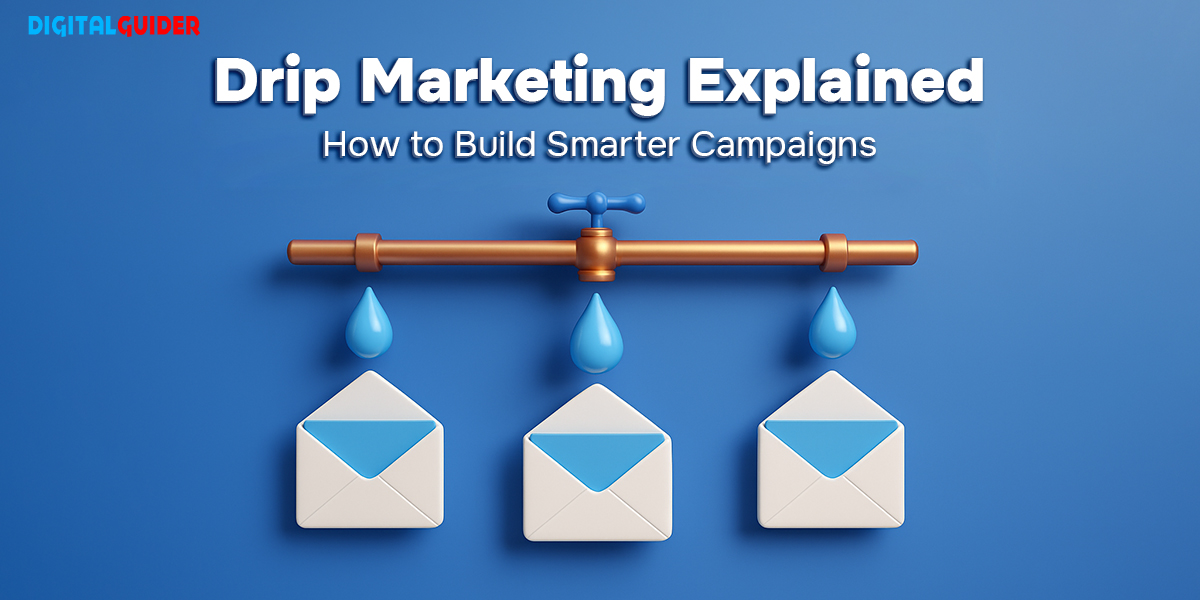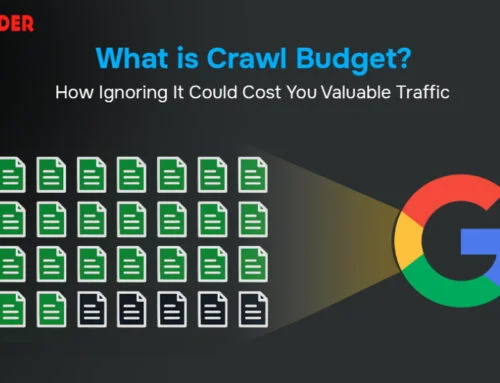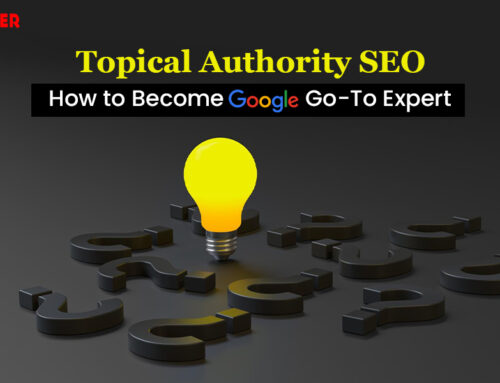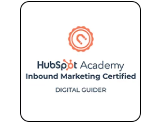Have you ever felt like a brand read your mind?
You browse a product, and minutes later – boom!
📩 An email lands in your inbox with exactly what you were looking for. A day later, you get a helpful email with reviews about the same product. Then, a follow-up message pops up offering you a special discount.
And finally, you made the purchase.
No, it’s not magic.
It’s drip marketing, a powerful strategy that sends the right message at the right time, gradually leading you toward a decision.
In this blog, you’ll discover how to use drip marketing to earn trust, nurture leads, and transform interest into action without sounding pushy or robotic.
What is Drip Marketing?
Popularly known as drip campaigns, automated campaigns, or marketing automation, drip marketing is a strategy that sends a sequence of automated messages to users over time. These messages are “dripped” out according to specific actions by users, such as signing up for a newsletter, abandoning a cart, or downloading a helpful resource.
💭 Think of it as an online follow-up method in which marketing campaigns guide potential leads through a personalized journey, keeping them engaged, informed, and more likely to take action.
While drip messages can be delivered through various mediums, such as social media or push notifications, email marketing remains the most common and effective medium. Its flexibility, personalization, and measurable outputs make it the most preferred and trusted by most marketers nowadays.
Let’s explore why drip marketing is quickly becoming every marketer’s go-to strategy.
Why Drip Marketing Is a Must-Have for Every Business?
These drip campaigns do more than automate—they personalize the journey for every potential lead, making them feel like your next loyal customer.
Here’s what makes it powerful:
Keeps the Brand at Top-of-Mind
Drip messages don’t feel like pushy notifications. They help your visitors feel connected, and your brand stays remembered by the visitors for a long time.
Sends the Right Message at the Right Time
According to the user’s actions, like sign-ups, clicks, or an empty cart, the marketing campaign can be customized to communicate with the potential lead at just the right moment.
Saves Time, Works 24/7
Your drip campaign doesn’t need constant check-ins or repeated setups. You can set it once with the relevant messages you want to deliver to your potential lead or customer and let this automation work while you focus on growth.
Boosts Engagement & Conversions
A well-timed message or follow-up email encourages the lead or visitor to explore your products or services further. It can be the right move that turns a user’s interest into action.
Builds Trust & Nurtures Relationships
Drip sequences, when delivered at the right time, can help you build a strong connection with your audience and guide leads smoothly toward decisions. These drip messages do not feel spammy; instead, they help you communicate well with your audience.
Now that you know why drip marketing is essential for marketers, let’s break down how it actually works behind the scenes.
How does Drip Marketing work?
There are various mediums that you can use to connect with your leads or potential customers via drip marketing.
Let us have a look at them:
Social Media Drip Marketing
Drip campaigns are widely used in social media marketing. A strategic sequence of targeted posts, DMs, or ads is published on popular social media platforms like Facebook, Instagram, or LinkedIn.
Any specific action by the user, like following your page, clicking an ad, or engaging with a story, can trigger a personalized automated sequence.
For example, Shopify uses a social media drip campaign to promote webinars—timed, targeted, and packed with value.
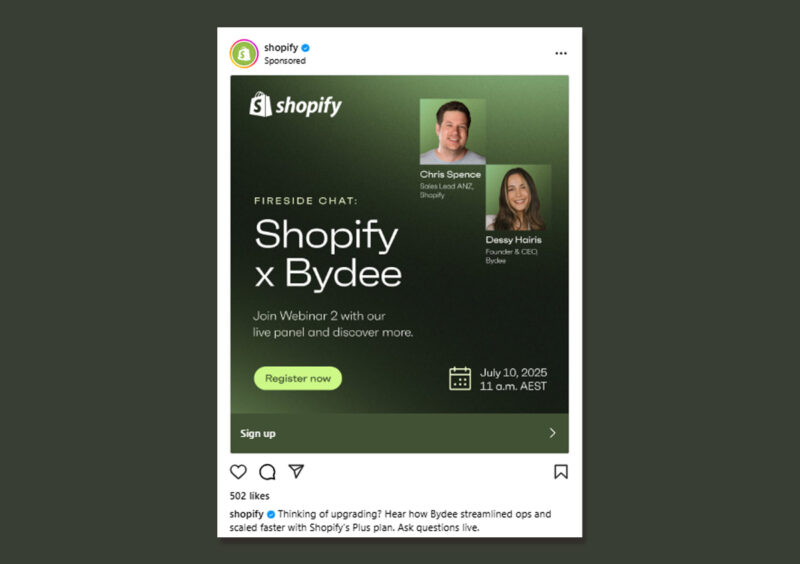
It’s a smart way to keep the audience hooked and move them closer to conversion, one post at a time. All of this happens automatically, guiding them deeper into your brand experience.
📌 Interesting Read: How To Increase Social Media Followers & Engagement?
Email Drip Marketing
You’ve probably seen it in action—maybe even today.
You sign up for a newsletter or download a free guide, and suddenly, your inbox starts getting perfectly timed emails. Not spammy, not random. Just…right.
That’s email drip marketing at its best.
It works by sending a series of pre-scheduled or automated emails based on what your audience does—like signing up, clicking a link, or leaving something in their cart. Each email drip campaign is part of a carefully planned journey designed to educate, engage, and convert, step by step.
Let’s break it down:
- Trigger: A user signs up, scrolls through a product, or downloads a freebie.
- Flow Begins: A pre-written email sequence appears automatically.
- Purpose: Move them closer to taking action—like buying the product, booking a demo, or exploring more.
✔️ Example:
Let us say a user downloads a free ebook from your website. You could set up these automated drip campaigns:
- Day 1: A warm thank-you email with the download link.
- Day 3: An informative blog post related to the ebook topic.
- Day 5: A case study or testimonial that builds trust and boosts engagement.
- Day 7: A personalized offer or free trial invite.
This drip email marketing campaign builds trust, provides value, and encourages action—without overwhelming the reader.
That’s why it is one of the most cost-effective ways to nurture leads, boost conversions, and maintain brand presence in your audience’s inbox.
👉 So, what types of email drip campaigns can you actually set up? Let’s explore.
Types of Email Drip Campaigns
When it comes to drip campaigns, there is no one-size-fits-all.
Here are some popular types you can use to engage with your audience via email:
- Welcome Series
Make an impactful first impression with a friendly and quick onboarding email marketing campaign right after sign-up by a new lead. Greet your new subscribers, introduce your brand or products, or provide them exclusive discount offers.
- Abandoned Cart Drips
A shopper adds a product to the cart but doesn’t buy. No problem.
This abandoned cart email gently reminds them what they left behind, sometimes with a little incentive (like free shipping) to bring them back.
- Lead Nurturing Sequence
Ensure to transform your cold leads into warm prospects with content marketing of blog posts, tips, success stories, or product demos to earn trust before asking for the sale.
- Re-Engagement Campaigns
Re-engagement email drip campaigns are best when you want to reconnect with dormant users through exclusive offers or surveys.
Share helpful content, offer a special deal, a product update, or simply ask, “Still want to hear from us?” to win back inactive subscribers.
- Post-Purchase Emails
The sale is not the end—it’s the start of a deeper relationship with your customer. Thank your customer, suggest complementary products or services, provide helpful tips on how to use what they purchased, or request a review. This strengthens customer loyalty and builds online reputation, boosting the chances of repeat purchases.
- Webinar/Event Drips
If you are hosting something special, then use email drip campaigns to confirm registrations, send reminders, share sneak peeks, and follow up after the event or webinar. It keeps your audience excited and engaged from start to finish.
So you have seen what drip marketing can do—but how do you actually set one up?
The best part is you don’t need to be a tech wizard to set up drip campaigns.
With a clear goal, the right tools, and a well-planned strategy, you can create an automated flow that nurtures leads, boosts conversions, and works for you 24/7.
Let’s walk through the process of setting up a drip campaign.
How to Set Up a Drip Marketing Campaign?
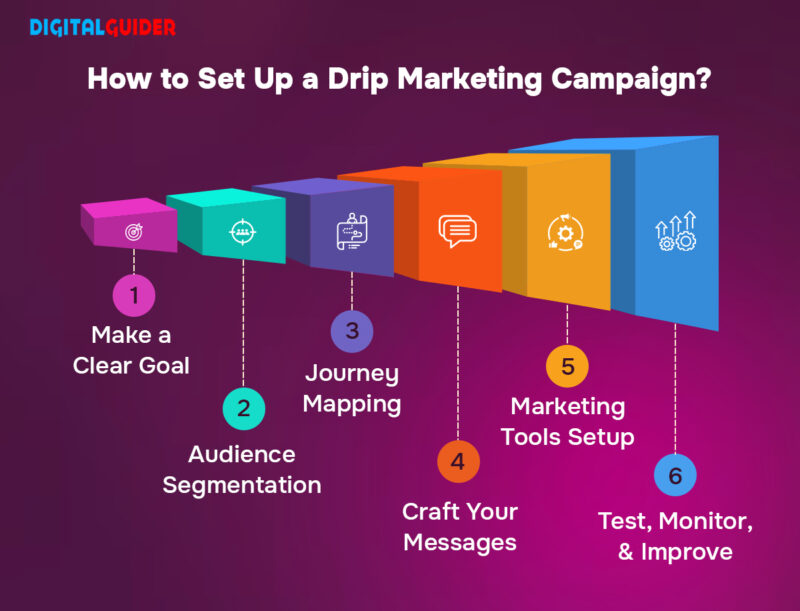
Step 1: Start with a Clear Goal
Every great campaign starts with a purpose, based on what your business goals are and what result your business wants to achieve.
So, firstly, ask yourself:
- Do you want to welcome new subscribers?
- Remind people about their abandoned carts?
- Nurture leads until they’re ready to buy your products and services?
- Reconnect and engage with inactive users?
The answers to these questions will help you shape everything, from the messaging to the timing of the drip marketing campaign.
Step 2: Segment Your Audience
Each lead is at a different stage of the buyer’s funnel. For instance, someone who visited your pricing section may require comparison guides or case studies. A new subscriber may need a warm welcome first.
Hence, a one-size-fits-all message won’t work. To convert effectively, align your message to their mindset—and move them forward, one smart touchpoint at a time.
That’s why it is important to segment your audience based on:
- Behavior: Downloaded a guide, clicked a product, abandoned cart
- Interest: Signed up via blog, webinar, or social campaign
- Stage: New lead, active user, past customer
This segmentation of the audience will help you determine your target audience and which triggers you should implement for your automated drip campaigns.
Step 3: Map Out the Customer Journey
This is the point where you plan your drip flow, step by step. Think of it like building a smart conversation—timed, relevant, and triggered by user actions. Each action tells you something about their intent, and your drip should respond accordingly.
For example:
- They sign up for a free trial → Send a welcome series
- They add a product to the cart → Remind them with useful nudges
- They fill out a contact form → Follow up with customized content
Every step should feel natural, not pushy—guiding leads forward without overwhelming them.
Then decide what happens next:
Trigger → Email 1 → Wait 2 Days → Email 2 → Wait 3 Days → Email 3
Step 4: Craft Your Messages
Now, write the actual messages your users will receive—whether via email, SMS, or social DMs.
The message should be:
- Short, clear, and valuable
- Conversational and personal
- Action-driven, with one clear CTA
💬 Examples:
- Email 1: “Welcome to [Your Brand]! Here’s what you’ll love.”
- Email 2: “3 quick hacks to get the most out of [product].”
- Email 3: “Still exploring? Here’s how others saw results.”
| ➕Bonus: Add eye-catching visuals, customer testimonials videos, or how-to guides to increase engagement. |
Step 5: Choose Your Drip Marketing Tools
Now, your business needs an effective marketing tool to automate your drip campaign. The right tool will help you set up triggers, design workflows, and track the performance of your drip marketing efforts.
Here is your quick guide to the marketing tools you can use to set up your drip campaigns:
⚙️ Top Tools for Email Drip Campaigns:
Tool | Best For | Key Features |
| Beginners, startups & small businesses | Easy automation building, attractive templates | |
| ActiveCampaign | E-commerce | Strong flows, advanced segmentation, smart triggers |
| HubSpot | B2B & sales-focused teams | Deep CRM integration, visual editor, sales alignment |
⚙️ Top Tools for Social Media Drip Campaigns:
Tool | Platform | What It Does |
All major social media platforms | Schedule drip-like post sequences | |
Instagram, Facebook, LinkedIn | Drip posts & analytics in one dashboard | |
| Sprout Social | Large-Scale Businesses | Plan, publish, & automate drip content |
These tools implement easy automation to your messages, based on your audience’s behavior.
Step 6: Test, Monitor, & Improve
Once your campaign is live, the real task begins—to analyze what’s working and what’s not for your business.
So, keep a regular track on:
- Open Rates – How many messages opens are there? Are your subject lines engaging?
- Click-Through Rates – Are people interacting with your content?
- Conversions – Are users taking the final action?
Based on the analysis, use A/B testing to experiment with your content and subject lines to explore new strategies.
Use A/B testing to:
- Subject lines
- Send times
- CTA buttons
- Email design/layout
The ultimate goal is to boost engagement and ROI by continuously optimizing your flow and earning the best results for your business’s growth.
Let us take a look at how successful brands are using automated drip campaigns in the real world.
Real-Life Drip Marketing Examples
Amazon
Amazon used a drip marketing campaign with the subject line “Can I have work–life balance working at Amazon?” to directly address job seekers’ concerns.
The email includes honest employee testimonials and outlines flexible policies, creating a transparent, human tone that builds trust and encourages engagement from curious job seekers.

Source - Really Good EmailsDyson
With the subject line “Items in your basket at Dyson” for the drip marketing campaign, Dyson reminds users of unfinished purchases. The email includes product visuals, additional benefits, or free shipping prompts—gently influencing users to return and complete their purchase without being pushy.
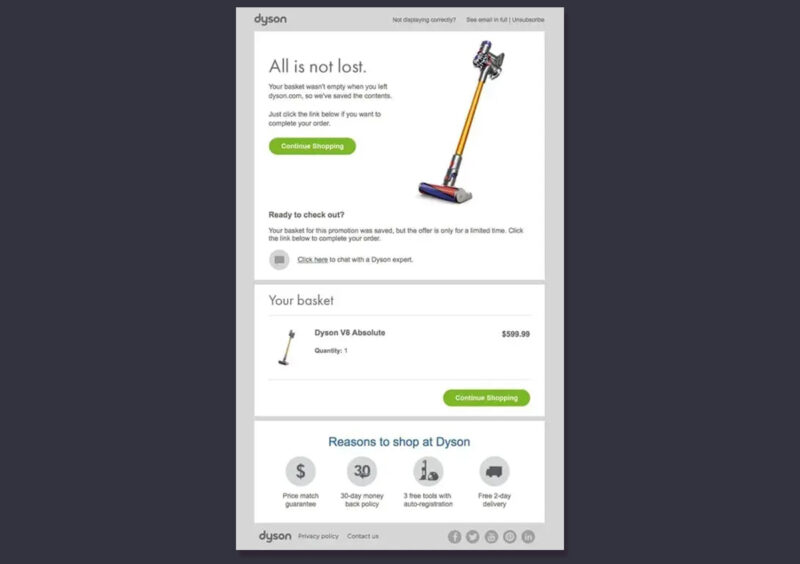
Source - HubspotBaron Fig
To win back inactive customers, Baron Fig sends a limited-time discount email with product images and new arrivals. It creates urgency and curiosity, encouraging users to return to the shopping cart and shop—an effective drip step to spark interest using a re-engagement drip campaign.
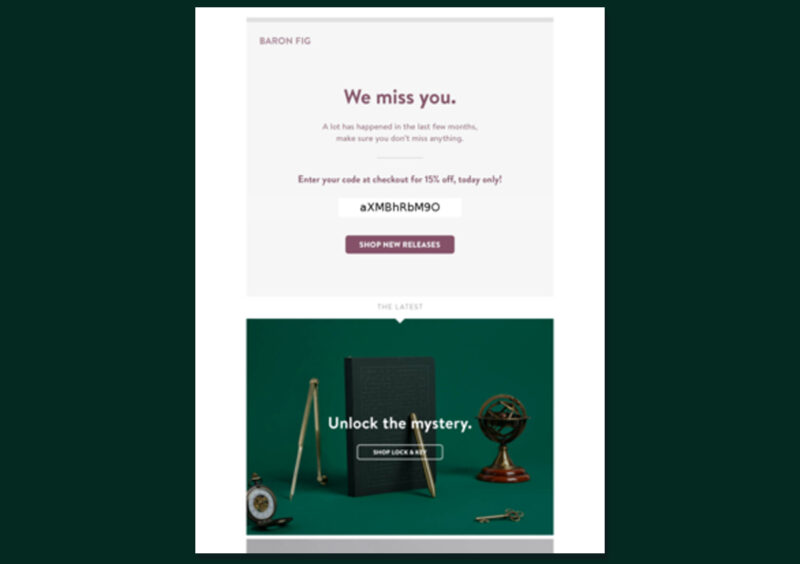
Source - Mail charts TL; DR—Make Every Message Count
Drip marketing is all about the perfect automation strategy. You have put in the work—defined your goals, mapped your funnel, and planned your messages.
Now it’s time to launch it like a pro. 🚀
The best drip campaigns don’t just reach people—they move them. With the right automation in place, your brand can show up at the perfect moment every time. Whether you are guiding a new lead or re-engaging an old one, strategic automation helps you stay connected.
Ready to grow your business with smarter digital marketing? Contact Digital Guider today!
FAQs
1. How is drip marketing different from a regular email campaign?
Drip marketing is automated, timed, and triggered by user actions—regular emails are often manual and one-time.
2. Can drip marketing be effective for B2B businesses?
Yes! Drip marketing helps nurture long sales cycles, educate leads, and build trust over time in B2B businesses.
3. Is a drip marketing campaign suitable for small businesses or just large brands?
It is perfect for both—small businesses benefit from automation and scalability without extra effort.
4. How many emails or messages should a typical drip marketing campaign include?
Anywhere between 3 to 7 messages are relevant, depending on your goal and audience engagement.
5. What’s the best time to send the first message in a drip sequence?
Immediately after the trigger, when the interest of the lead is highest.
6. What is the difference between time-based and behavior-based drip flows?
Time-based sends on a set schedule, whereas behavior-based responds to user actions like clicks or opens.
7. How do I segment my audience for more effective marketing campaigns?
Segment your audience by behavior, source, location, purchase history, or engagement level to create relevant marketing campaigns.
8. How do I personalize drip messages without sounding robotic?
Use the recipient’s name, craft behavior-based content, and use conversational language to connect better.
9. Can I use drip marketing for customer onboarding and not just sales?
Absolutely—rip campaigns are great for tutorials, product tips, and building early trust.
10. What’s a common mistake to avoid in drip marketing?
Sending too many irrelevant messages to the potential lead or not aligning the content with the user’s intent are the most common mistakes.
